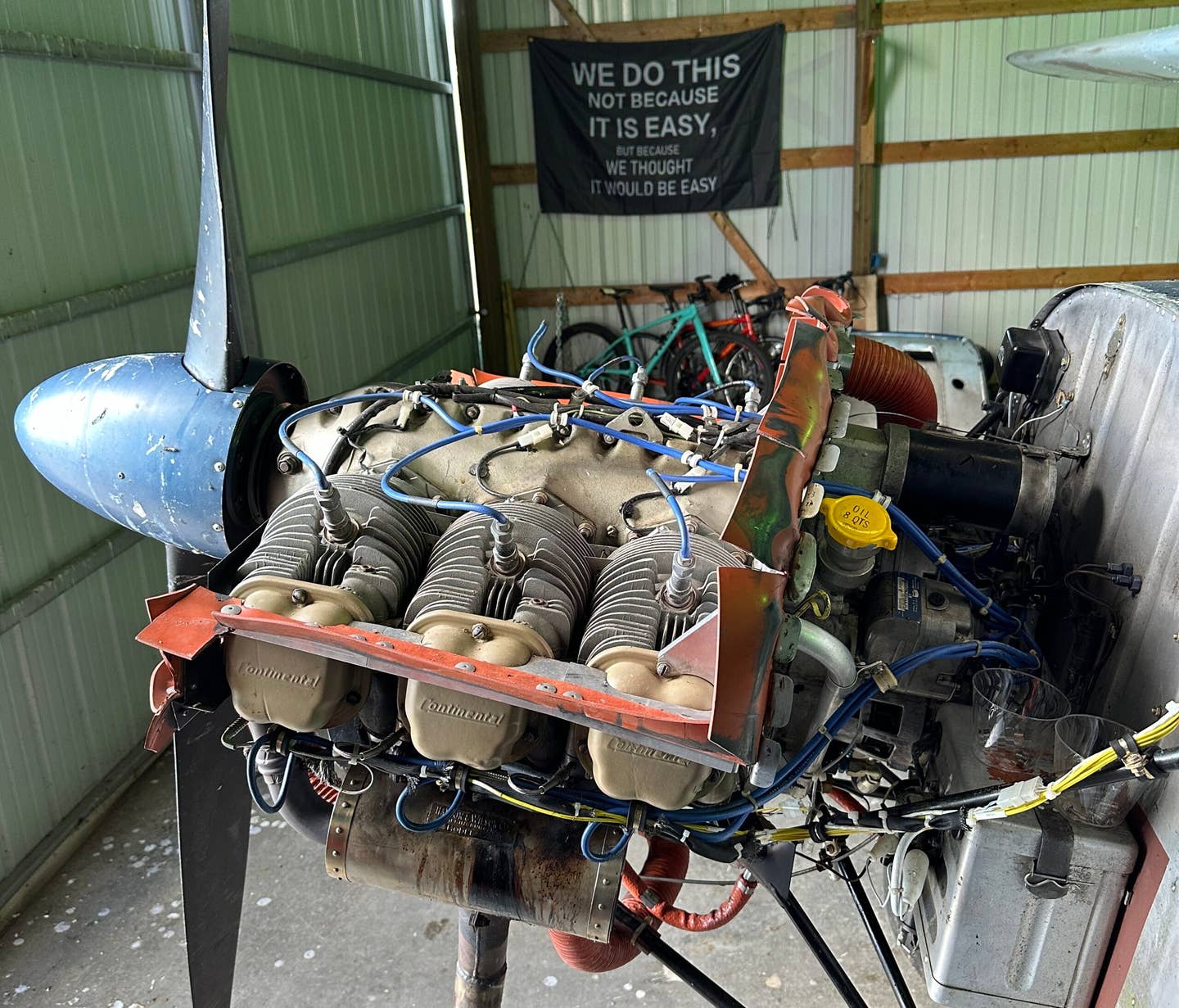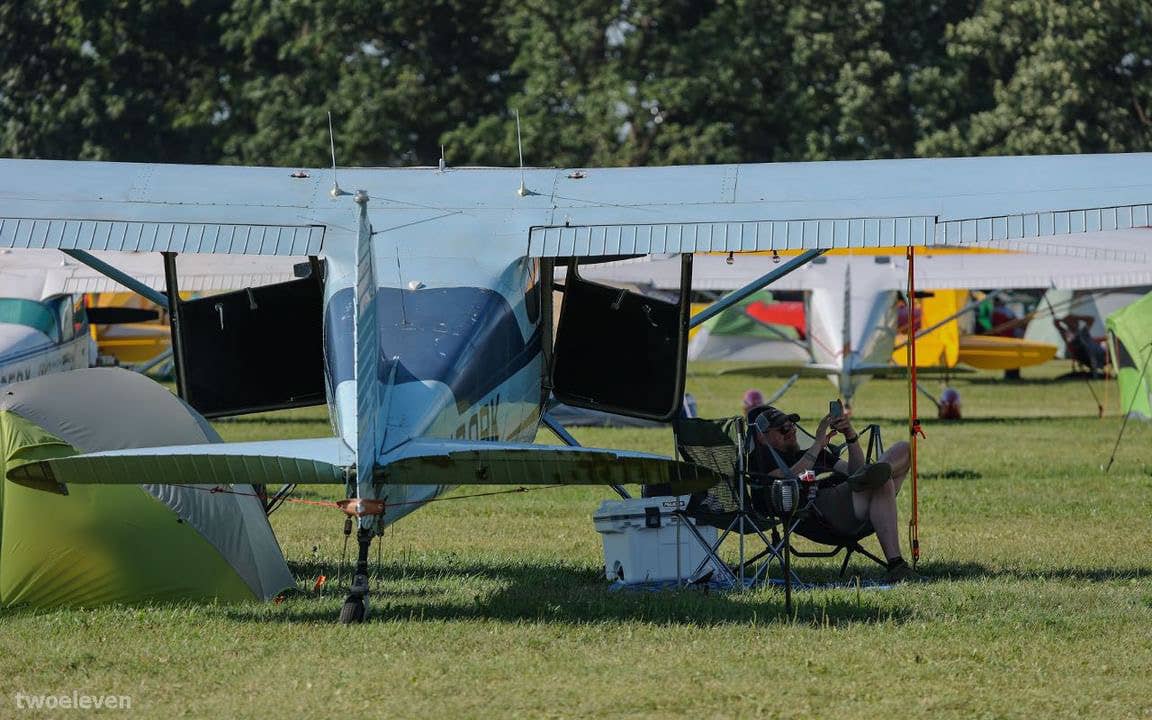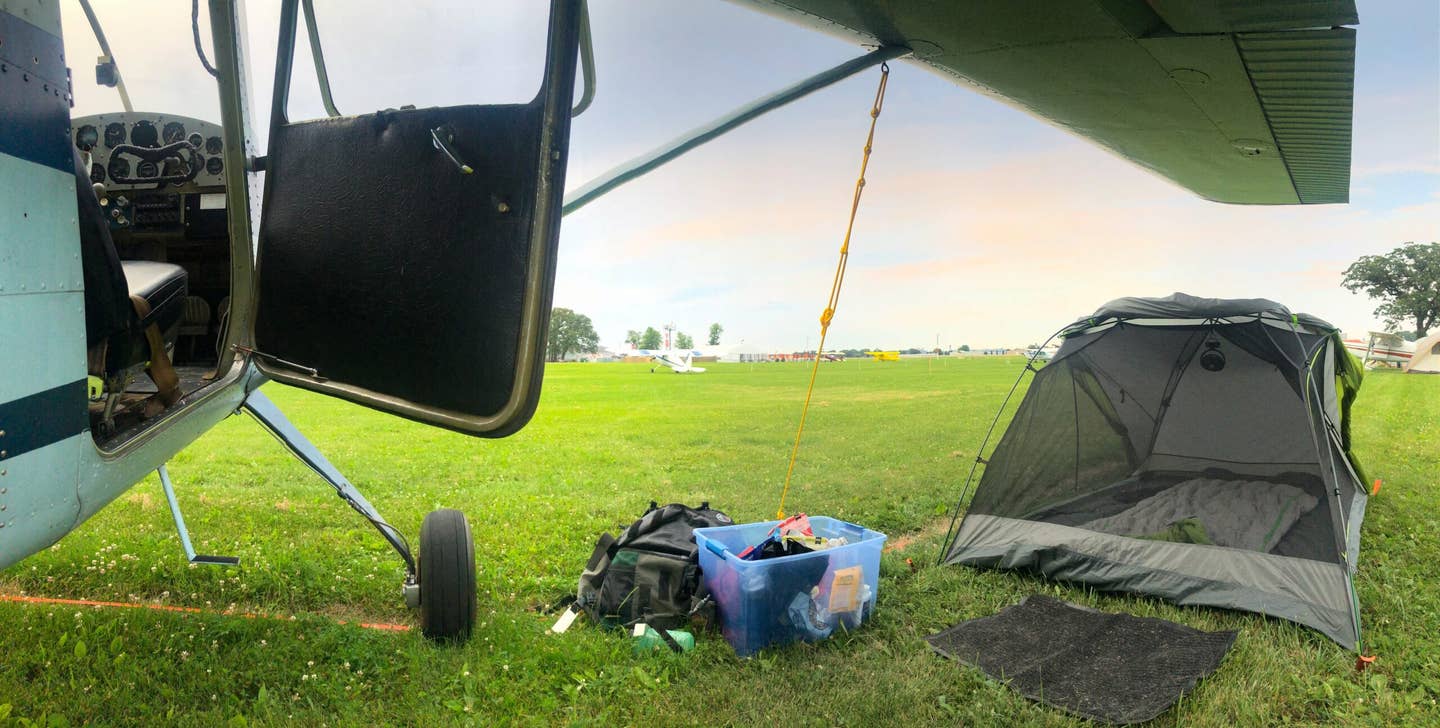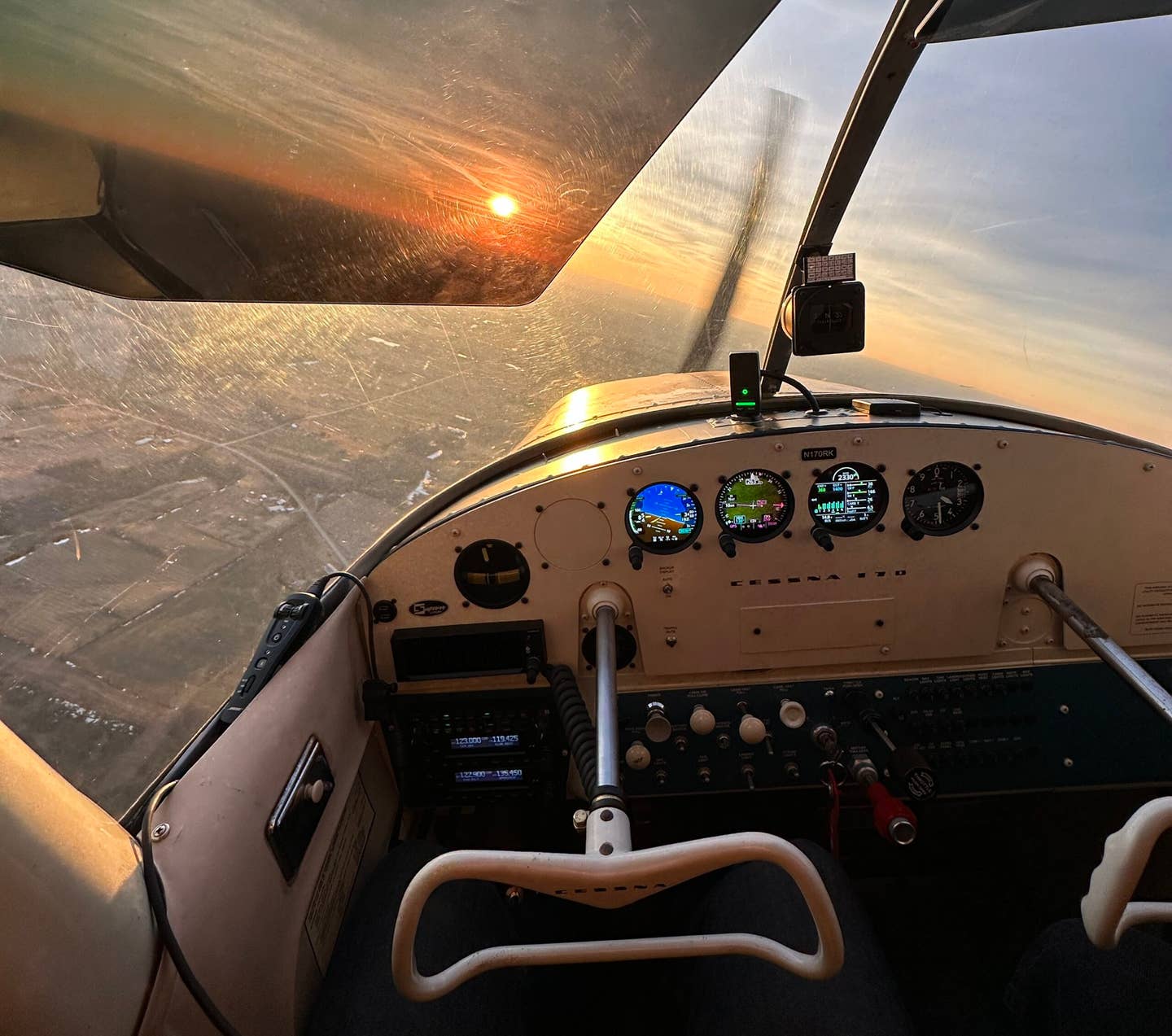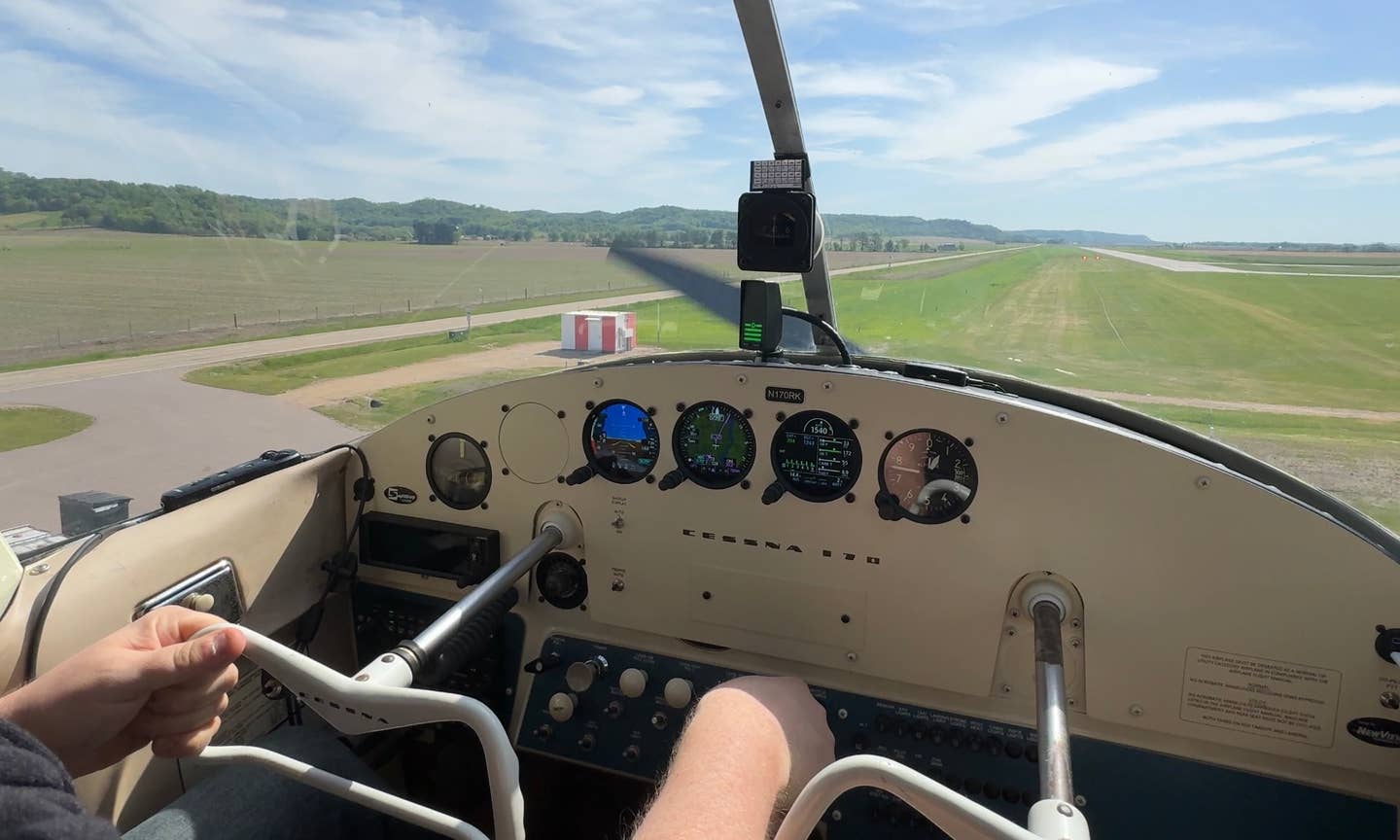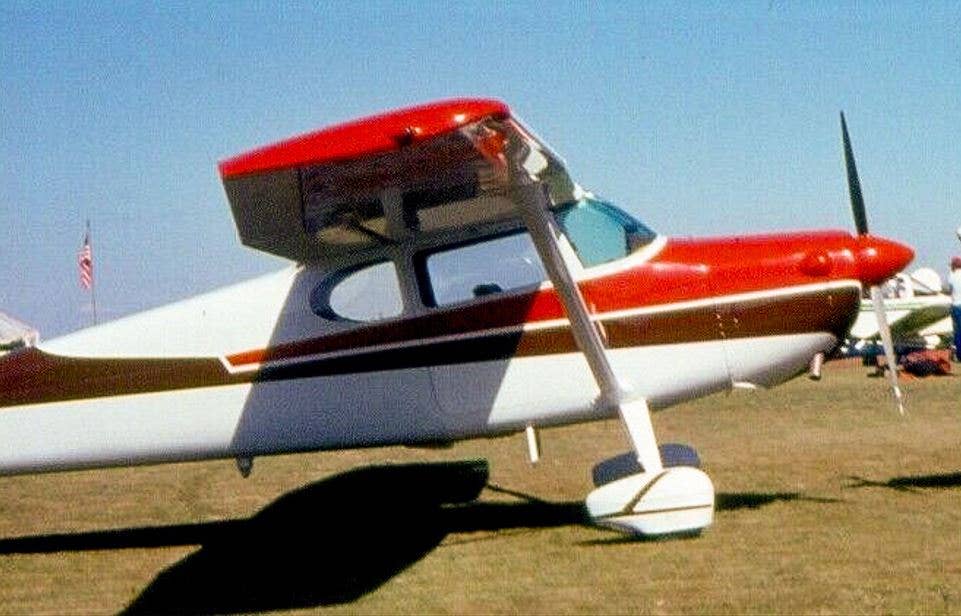Fun Mods or Saving for a Potentially Expensive First Annual?
This pilot wrestles with and nervously answers an age-old question, sort of.
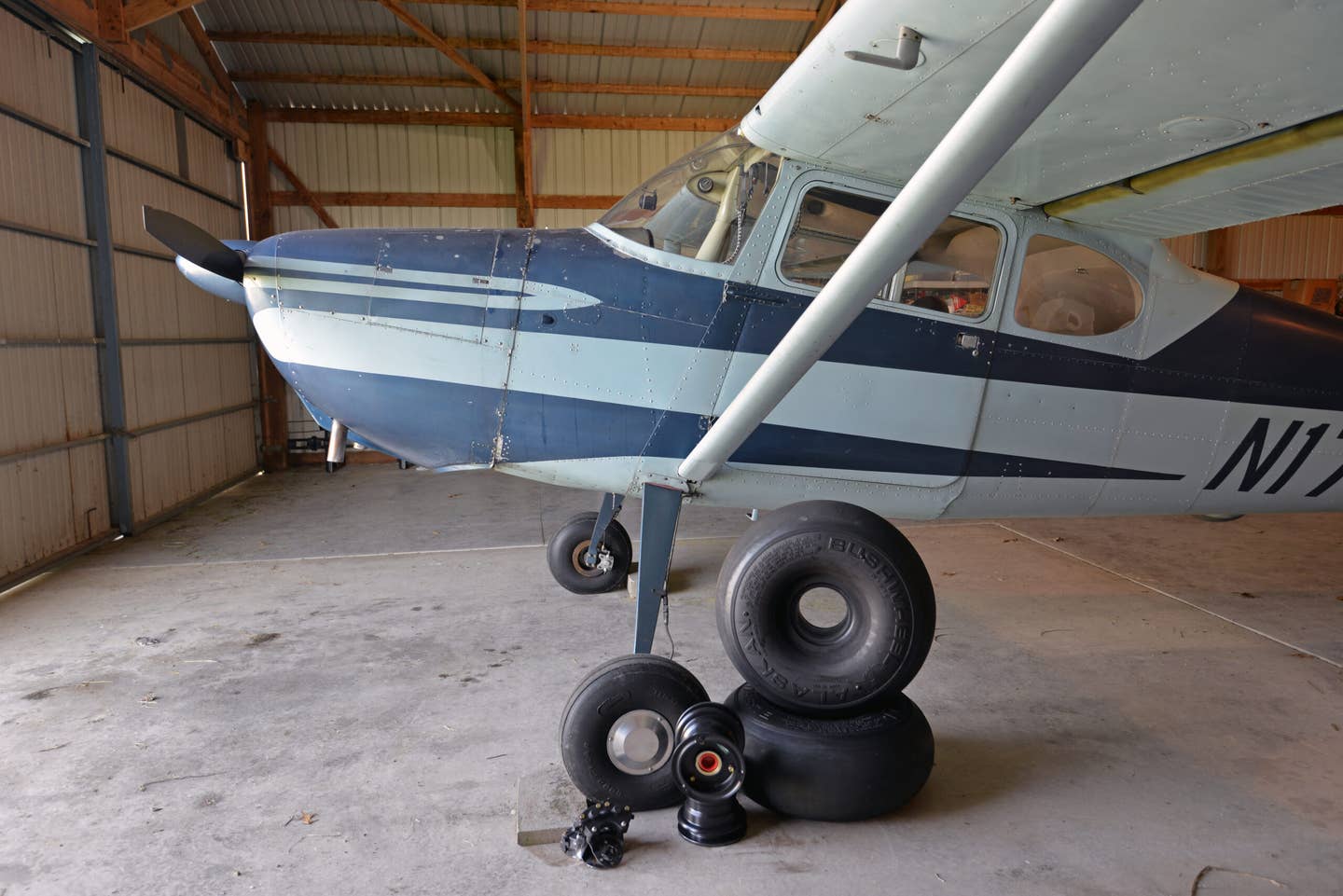
A new set of wheels, brakes, and 26-inch tundra tires will freshen up the 170…hopefully without blowing the budget for the first annual inspection. [Photo: Jason McDowell]
There is no question that saving money for the unexpected and focusing on basic airworthiness is the prudent thing to do in preparation for your airplane’s first annual inspection. Logically, one should prepare for things like magneto overhauls, starter rebuilds, new engine mounts, and other critical yet unexciting repairs. Buying frivolous and unnecessary modifications makes no sense at all.
But for me, airplane ownership itself is somewhat frivolous and unnecessary. And after all, I’d be a safer pilot if I wasn’t distracted by the absence of cool things like tundra tires and STOL kits. These were some of the justifications I made to myself as I walked into my bank to make a four-figure withdrawal and drove two hours away to pick up my Craigslist find.
“Like absentmindedly tossing a king-size Snickers onto the belt in the grocery store checkout line, casually browsing the aviation section of my local Craigslist is something I should probably consciously avoid doing.”
Like absentmindedly tossing a king-size Snickers onto the belt in the grocery store checkout line, casually browsing the aviation section of my local Craigslist is something I should probably consciously avoid doing. Both activities can lead to regret, and they can delay prudent, carefully-laid-out plans. But we’ve all got bad habits, and as a non-smoker and non-drinker, I accept that this is one of my own.
The Craigslist find in question was a listing for four 26-inch tundra tires. Two were claimed to be very lightly used, and the other two had some cord showing along the edges. I called the seller within minutes of discovering the listing. When he accepted my counteroffer, I told him I’d be there in a couple of hours and promptly hit the road.
From the moment I flew with my friend Jim in his 170 and felt how his pillowy soft 29-inch tires soak up the imperfections of rough surfaces, I knew I wanted quality tundra tires. The idea of landing on ice-crusted frozen lakes and the ability to safely land on virtually any surface after an engine failure was pretty enticing to me. When Oshkosh was saturated by constant rains a few years ago, the field—and the most sought-after camping spots—were limited to aircraft with tundra tires for the first day, and that privilege alone seemed to justify their price.
Prop clearance was another concern. As I plan to eventually install a larger-diameter seaplane propeller, I love the idea of having additional room between the prop tips and the ground. Even if the standard tires technically provide sufficient clearance, a bit more goes a long way mentally and eliminates some of that uncomfortable distraction.
But when it comes to aircraft maintenance and modifications, things are rarely as simple and as straightforward as they seem. During my investigation, I learned that my existing single-puck Cleveland brakes are a bit too weak to effectively brake with big, large-diameter tires. An upgrade to double-puck brakes would, therefore, be necessary.
Further research revealed many potential complications that can result from imperfectly matched wheels, brake calipers, and tires, so I decided to simply order the wheel and brake kit from the tire manufacturer. While relatively pricey, this eliminated the possibility of insufficient clearance between the calipers and tire sidewalls. Once again, the peace of mind seemed worth it to me. Buy once, cry once.
With the tires in hand and the wheel/brake kit on the way, the specter of the dreaded first annual inspection loomed larger than ever. Regardless of aircraft type, everyone seems to agree that a new owner’s first annual will invariably be a very expensive endeavor. This is primarily a function of the airplane being completely unfamiliar to the mechanic; as they sift through the airplane with a fine-toothed comb, it’s not uncommon for new and expensive problems to be uncovered.
The mechanic will also spend significant time combing through the aircraft and engine logbooks, familiarizing themselves with the history and looking for discrepancies. If a modification had, at some point, been installed without the necessary accompanying STC paperwork, that would be a problem. Similarly, if there’s no logbook entry to show compliance with a mandatory airworthiness directive, that would also be a problem. Both of these examples would require additional hours of research and potentially additional hours of work on the airplane.
To better prepare myself and my mechanic Ryan, I began to compile a list of items to address during my first annual. Beyond the installation of the aforementioned tires, wheels, and brakes, my list was growing.
Fuel sumps, for example. Two of them have been acting a bit finicky. One will slowly drip fuel if it’s not physically turned all the way to the right. The other is simply becoming very difficult to depress. If either of these fail, the resulting fuel leak will become a significant problem.
I’d like to proactively replace the tailwheel leaf springs. To my knowledge, mine are the original equipment from 1953. At around $300 for a complete set, this seems like inexpensive insurance, as the failure of a tailwheel could easily result in an expensive ground loop.
I’d also like to have him deactivate the parking brake entirely and remove the parking brake hardware. Over the years, Cessna 170 owners have discovered that when landing in strong crosswinds, the rudder pedal can come into contact with some of the parking brake cables, inadvertently setting the parking brake. This is another relatively simple issue that can result in a very expensive ground loop.
Finally, since the airframe inspection ports will be all opened up, I’d like to have him treat the insides of the wing and fuselage with a corrosion inhibitor like Corrosion X or ACF 50. These products are liquid that is sprayed like spray paint onto metal surfaces to preserve and protect them. Although I keep my airplane hangared and live far away from saltwater, this seems like smart preventative maintenance.
All of these things add up, and it’s wise to set money aside prior to an annual to prepare for the final bill. Frolicking through Craigslist and throwing money at cool modifications is admittedly less wise. But with any luck, my first annual won’t be too crippling and I’ll come out of it with a machine that’s both airworthy and also a bit more fun.

Subscribe to Our Newsletter
Get the latest FLYING stories delivered directly to your inbox

